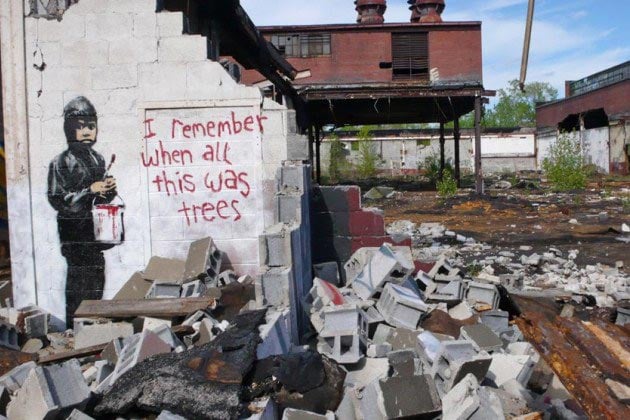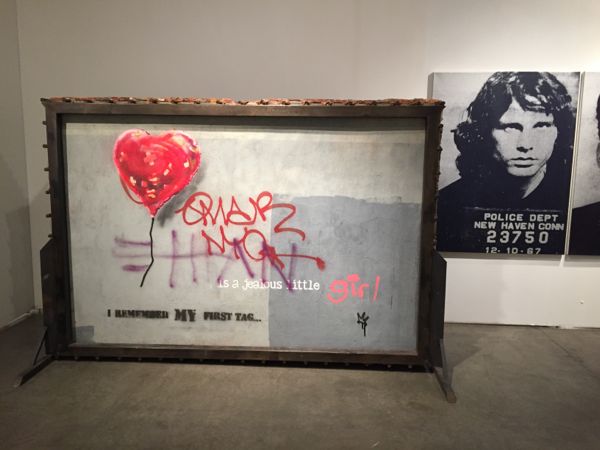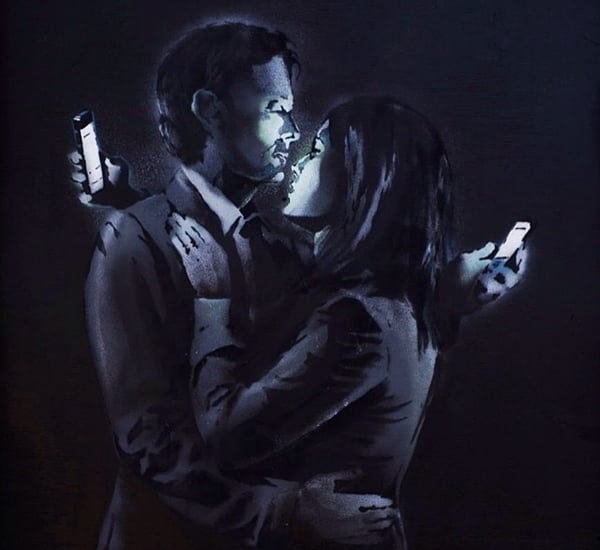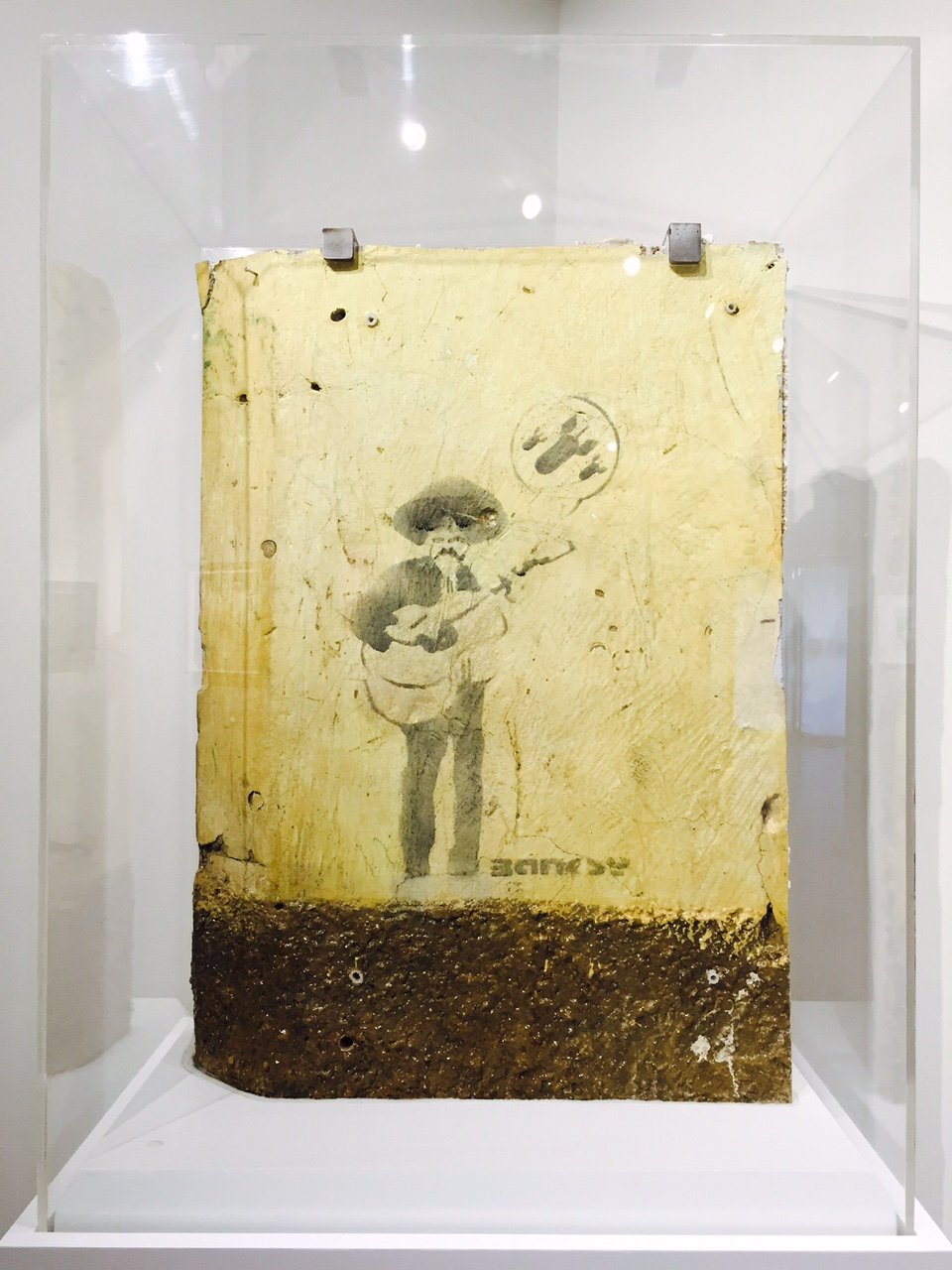Auctions
Controversial Banksy Salvaged From Detroit Ruins Is a Bust at Auction
The work raised just $137,500 for an art nonprofit.

The work raised just $137,500 for an art nonprofit.

Sarah Cascone

Five years after having been saved from the wrecking ball, the controversial sale of a Banksy piece from Detroit has finally gone through. With the auction house, Los Angeles’s Julien’s Auctions, having predicted a hammer price of $200,000 to $400,000, its sale for $137,500 was undeniably disappointing.
The artwork, featuring a small African-American child lamenting “I remember when all this was trees,” appeared in 2010 in the ruins of Detroit’s Packard Plant. 555 Gallery salvaged the 8-foot, 1,500-pound mural before a scheduled demolition, and was granted ownership by a judge after a failed lawsuit by the property owner.
There was considerable backlash against the gallery this past March when it announced its intentions to sell the work in the interests of promoting young artists and financing new educational programs. In its defense, 555 Gallery touted its status as a cash-strapped, volunteer-run nonprofit that had rescued an otherwise soon-to-be-bulldozed artwork from certain destruction.

Banksy’s Heart Balloon (2013) at Keszler Gallery. Photo: Ben Davis
The gallery, which will ultimately pocket $110,000 from the sale, is staying positive about the transaction. “I did everything I could not to set any expectations,” Gallery 555’s executive director, Carl Goines, told the Detroit Free Press. “What we have now is so much more than we’ve ever had in the past.”
It could have been worse: Another Banksy work included in the sale, Donkey Documents, failed to find a buyer despite a $400,000–600,000 estimate.
According to the artnet Price Database, the anonymous British street artist has topped the $1 million mark three times at auction. But those prices have only been reached for sculptures and works on canvas, not salvaged street art works.
Accordingly, it’s not the first time that a purportedly priceless Banksy has failed to fully deliver on it promise of easy money. Christopher Thompson’s documentary How to Sell a Banksy recounts his years-long struggle to sell an early work by the street artist, ultimately getting a mere $25,000 for his trouble.

Banksy, Mobile Lovers (2014).
Courtesy Vision Invisible/Flickr.
Manhattan-based Keszler Gallery also was unable to capitalize on the four works snagged from Banksy’s October 2013 New York residency, as recounted in HBO’s Banksy Does New York documentary. (The artist’s official authentication service, Pest Control, has been stymieing owner Stephen Keszler’s efforts to sell Banksy street art for years.)
For his part, Banksy has come out against the resale of his street art works—kind of. “This show has got nothing to do with me and I think it’s disgusting people are allowed to go around displaying art on walls without getting permission,” read a self-aware statement on the artist’s website denying any affiliation with this past year’s “Stealing Banksy” auction.
(That supposed sale was later revealed to be a means of gauging public interest in a London street art museum, rather than a money-making venture.)
Of course, Banksy ultimately gave his blessing to a Bristol Boys’ Club that had controversially snatched his Mobile Lovers off a nearby wall. Perhaps buoyed by the artist’s approval, the work sold for $670,000, saving the struggling youth organization.

Banksy, Mariachi Player (2001).
Photo: Taglialatella Galleries, New York.
New York’s Taglialatella Galleries hopes that good will help boost sales at its “Better In Than Out” Banksy exhibition, opening today, which includes the artist’s Mariachi Player. The wall piece is being sold to benefit the Lower East Side Girl’s Club of New York’s operations in Chiapas, Mexico, where the work was created in 2001.
“Many of these walls have a ‘sketchy’ history (no pun intended) on how they were removed, and they haven’t been accepted by the major auction houses yet,” admitted gallery president Brian Swarts in an e-mail to artnet News. He is hopeful that Mariachi Player, documented in Banksy’s self-published book Banging Your Head Against a Brick Wall, will find a buyer this time around, after being unsuccessfully offered at Julien’s in 2014.
For 555 Gallery, the proceeds of the sale will go toward plans to convert a 30,000-square-foot warehouse into a multi-use arts space that will serve as its new home.